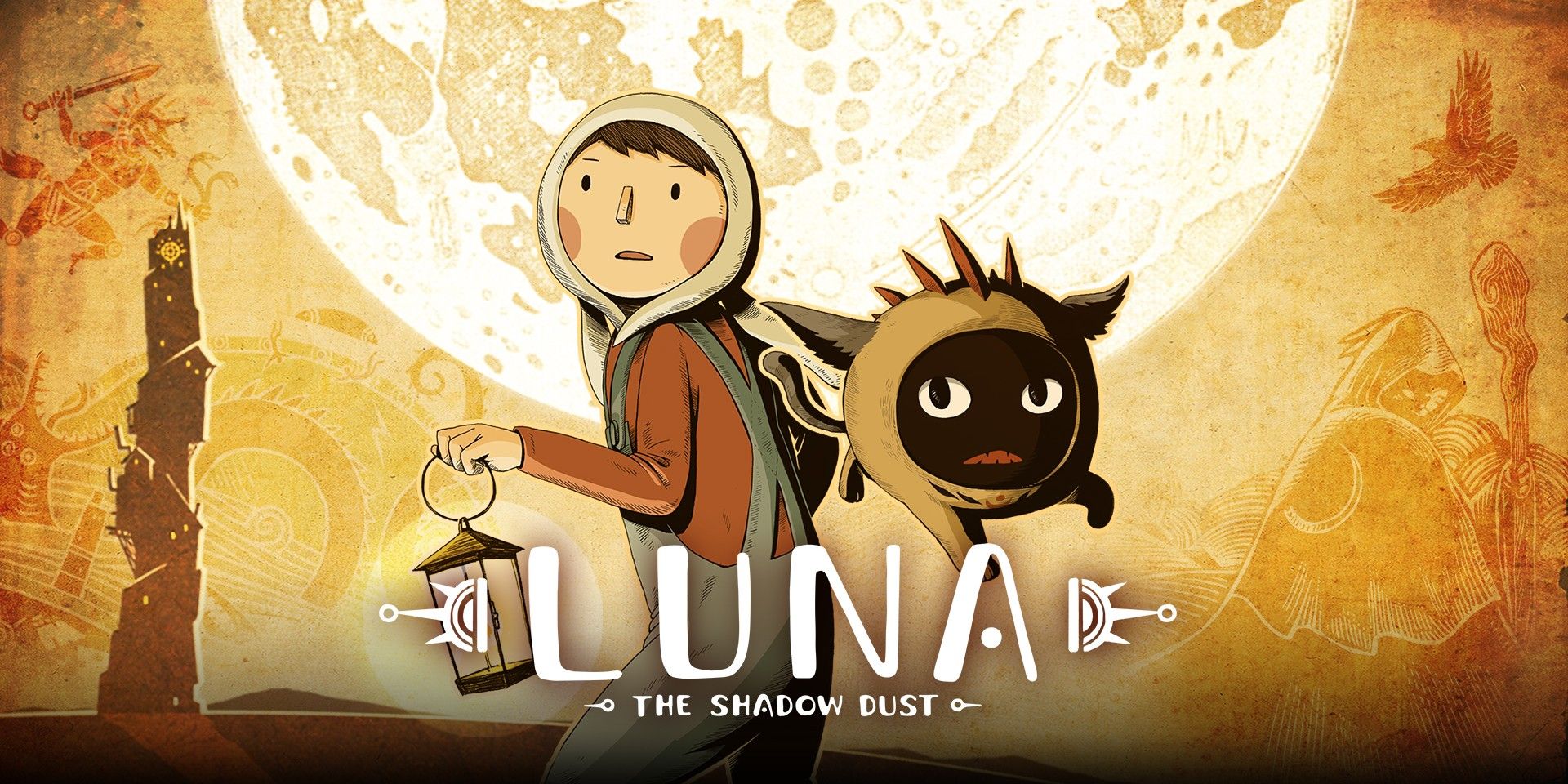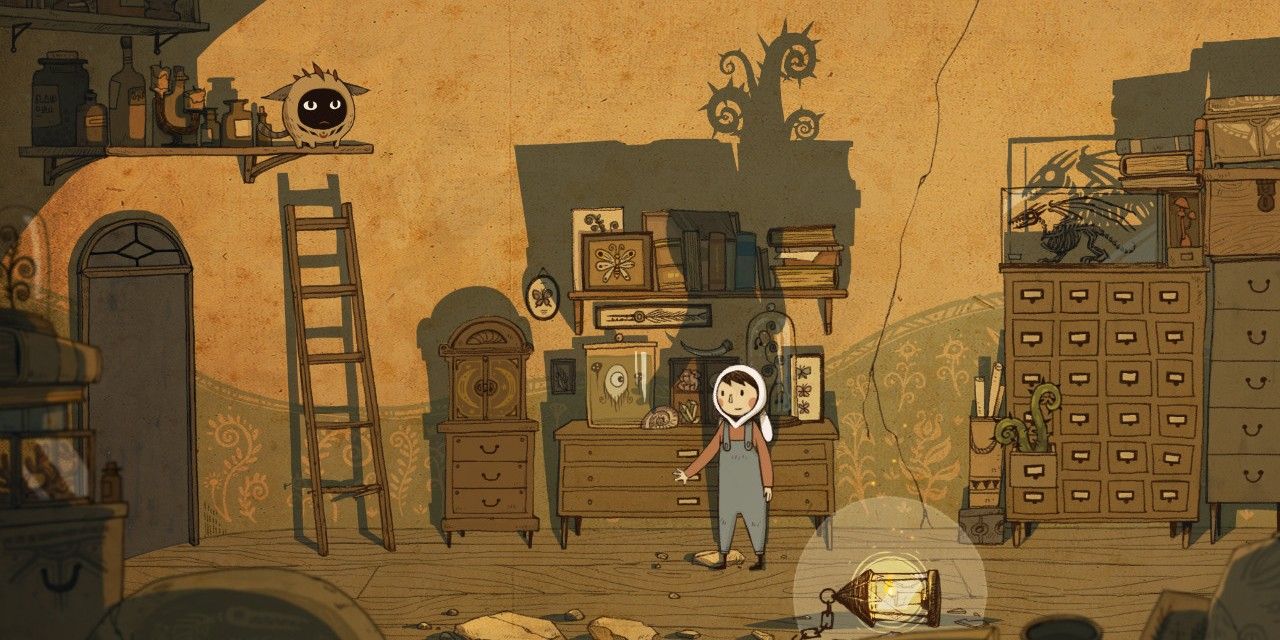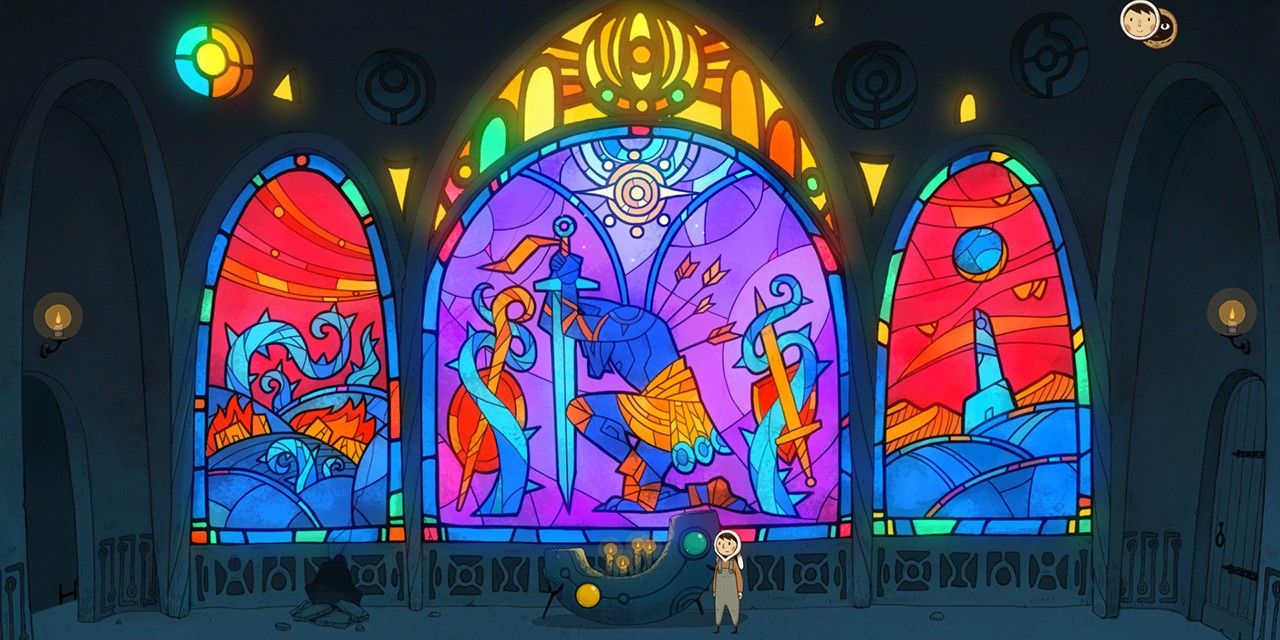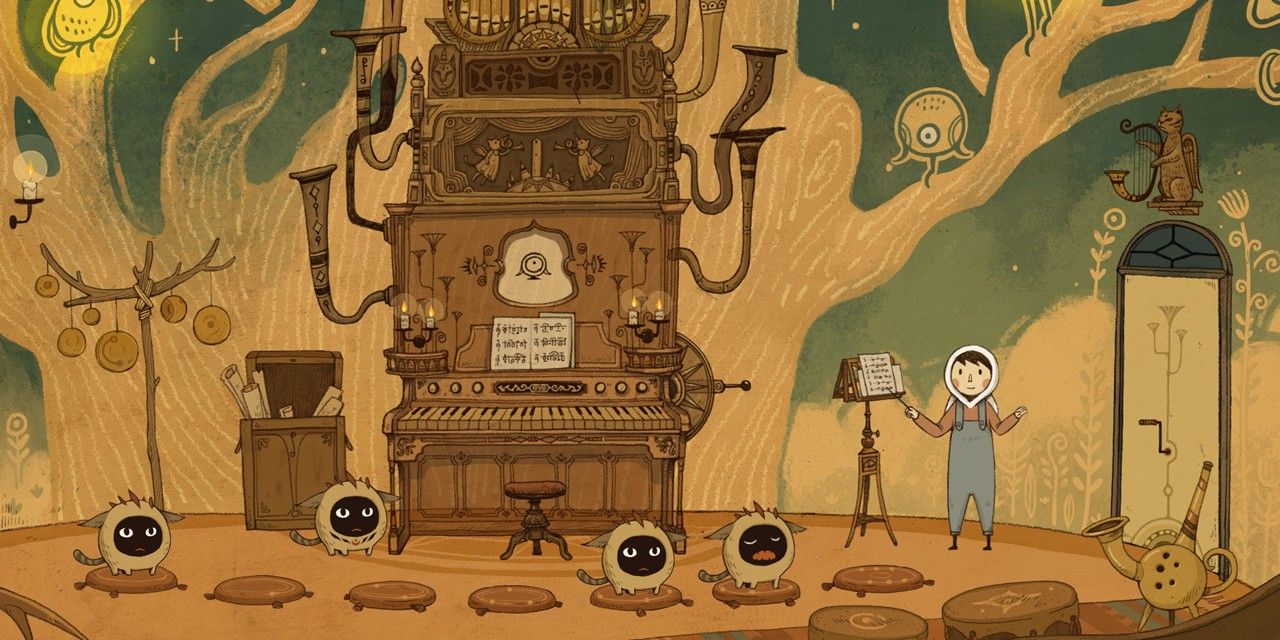New gameplay mechanics are a dime a dozen, and unique art style is often expected from indie games. What's rarer is the combination that uses an original aesthetic to drive gameplay and narrative. Luna: The Shadow Dust reinvents the modern puzzle adventure with dual character gameplay, beautiful hand-drawn art and a lilting score, but also by tying its mechanics so tightly to its visual theme, making one cohesive -- and beautiful -- game.
Kickstarted in 2016 and released in February of 2020, Luna: The Shadow Dust is the first game from indie developer Lantern Studio. It follows a young boy in his quest to restore balance to his world, requiring him to climb the levels of an immense tower and restore light and order to each one. The short, animated puzzle adventure draws players in with its style and mechanics for a haunting, compelling play.
As the name might suggest, Luna draws a lot of its aesthetic from the use of shadows. As the player climbs the tower, each floor invites a new way to think about interacting with light. Sometimes this is superficial -- as parts of the puzzle are solved, different sections of a window light up, or aspects of the environment trigger interactable mechanics as they begin to glow. Other times the interaction with light is more meaningful. Playable characters turn from flesh to shadow as they jump onto shadows cast by objects in the environment to access new vertical levels.
The emphasis on light and shadow becomes not only a leitmotif throughout the game, establishing a vivid art style that links each floor together, but also a core mechanic that sets Luna apart as a puzzle game. Retraining standard puzzle-solving techniques to incorporate shadows as usable items and looking for light cues for interactive objects makes Luna a compelling challenge even for well-established puzzle-lovers and sets players on even footing as they approach the game.
Other mechanics are less novel but still as fun. Players control both a boy named Üri as well as his animal companion Layh, and both characters must be able to exit each level in order to proceed. Üri is able to push buttons and turn cranks, but Layh can crawl into tight spaces. The characters can work together in the same room, having Layh jump off a shadow cast by Üri in order to reach higher parts of the screen, or in different rooms altogether. In one level, Üri and Layh must occupy different seasons in order to access all the components necessary to solve the puzzle.
Collaborative dual gameplay in a single-player game has been done before, but it certainly adds value to Luna, making the puzzles more intricate and increasing the different available ways to explore each level. Establishing a connection between these two characters also makes some of the storyline hit harder, making players care for their animal companion's safety at key moments.
Luna also tells its fantastical story with no written dialogue, relying only on animated interactions to supply its narrative. In some instances, characters will develop thought bubbles to indicate that a door is locked, but these show only images to get their messages across. The lack of dialogue reasserts Luna's emphasis on visual representation, where all of the hand-drawn art has to do double-duty to provide not only ambiance and scene-setting but also narrative weight. It also means that Luna is easily translatable -- while credits are available only in English and Chinese, the game can be played by speakers of any language without translation.
In addition to its moody, hand-drawn animation, Luna also uses an original soundtrack to evoke its dreamy world. Heavy on strings and atmosphere, the bespoke music from composer Wang Qian helps enhance each level's experience. It feels inquisitive, without the thunderous drive of a battle theme or high-octane experience of much video game music, but with a sense of drive that not only invites a player to explore but keeps up the momentum even when players feel stuck and unsure of their next actions.
Altogether, Luna: The Shadow Dust's innovative light-play, solid puzzle design and compelling use of standard mechanics work together to update the staid adventure game format. Moving from level to level, solving puzzles to enable progress evokes the standard point-and-click adventure game format while modernizing it with moody graphics and music and updated gameplay. Luna becomes both an evolution of genre, ensuring that it's a must-play for fans of adventure games, but also something entirely unique.
While Luna: The Shadow Dust does outstanding work in allowing the player to participate in the story rather than dictating the world to them, there are a few moments this falls apart. There are only a few cut scenes in the game, but these often stretch on for a length of time, making them feel much more like animated shorts embedded in the otherwise interactable world.
The length of the cut scenes especially becomes a problem in the end game. As players reach the top of the tower, they are treated to a movie about the events of the past that allows them to take the final actions necessary to beat the game. Except there's so little intractability after the cut scene that it feels superfluous, a performative moment allowing the user to have some agency in bringing about the ending but no real emotional involvement.
But despite the misplacement of these cut scenes, on the whole, Luna: The Shadow Dust presents a compelling game that tightly ties together gameplay mechanics and aesthetic. It's a phenomenal debut from Lantern Studios and suggests what is possible from the modern puzzle adventure genre.
Developed by Lantern Studios and published by Coconut Island Games and Application Systems Heidelberg, Luna: The Shadow Dust is available now on PC, Mac and Linux.




